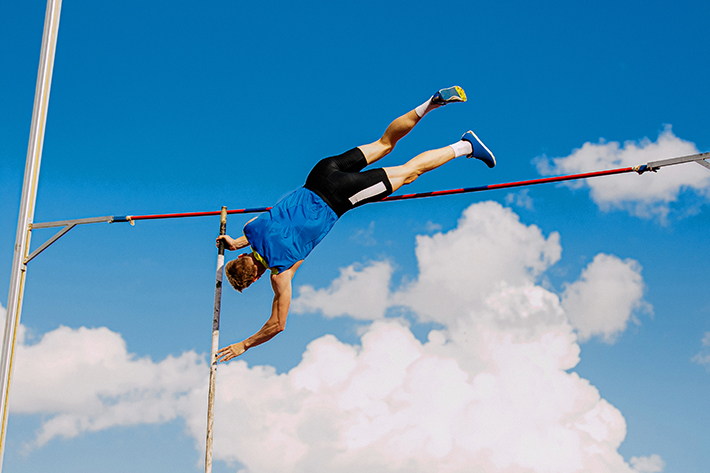
Pole Vaulting Safety Addressed by New Standard
A new ASTM International standard addresses safety elements of pole-vaulting areas. The new standard (F3711) establishes safety, performance, and maintenance recommendations for indoor/outdoor, and private-use pole vault facilities. ASTM’s sports equipment, playing surfaces, and facilities committee (F08) developed the new standard.
According to ASTM member Andrew Amsden, the new standard will help to create general guidelines for aspects of pole vault that differ between high school, college, and international rule books, such as the allowance of mid-marks and takeoff-marks on the runway.
“Rule books govern the competition aspect of pole vaulting,” says Amsden. “This standard addresses the playing space and how to keep the athletes and equipment safe.”
Ensuring that the space around an active pole vaulter is clear of people who could be injured and objects, such as chairs, that could damage fragile fiberglass poles, is an essential aspect of the standard.
Amsden notes that pole vaulting meet directors, sports builders, and track and field governing bodies will all find the new standard to be useful. These entities include:
- New facility builders can use the standard to make sure adequate space is available in participation areas to mitigate safety issues;
- Current facility owners will be able to assess areas where changes could be made, such as additional wall padding indoors;
- Manufacturers will have clearer parameters for creating new equipment, for example, the height of stoppers that keep landing mats from shifting backward over time, and;
- Governing bodies can use the standard to supplement their rule books or to determine if any supplemental safety recommendations would be beneficial as additions to rules.
Amsden says all interested parties are encouraged to join the subcommittee (F08.67) that developed F3711.
“Everyone brings a different viewpoint – athletes, coaches, officials, manufacturers,” notes Amsden. “The more viewpoints we can get, the better we can make standards that address the widest scope of safety concerns within the sport.”
ASTM welcomes participation in the development of its standards. JOIN ASTM.
To purchase standards, contact ASTM International customer relations (tel +1.877.909.ASTM; https://www.astm.org/contact).
 SN Home
SN Home Archive
Archive Advertisers
Advertisers Masthead
Masthead RateCard
RateCard Subscribe
Subscribe Email Editor
Email Editor